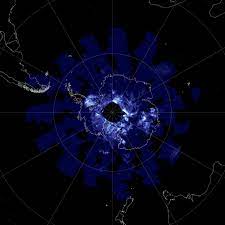Scientists at the University of Sydney have developed a new data recovery system that allowed the retrieval of gigabytes of information from a NASA mission that aimed to map dark matter around galaxy clusters. The Super Pressure Balloon Imaging Telescope (SuperBIT) was launched in April from Wānaka Airport, New Zealand, and floated around the world 5.5 times. However, it was damaged upon landing in southern Argentina the following month. Despite the damage, two Data Recovery System packages were able to descend safely, containing over 200 gigabytes of information including a map of dark matter around galaxies and stunning space photos.
Dark matter, an invisible substance with a mass six times greater than regular matter in the universe, remains a mystery to scientists. The research conducted by Dr Ellen Sirks from the University of Sydney’s School of Physics, published in the journal Aerospace, not only provides instructions to build the Data Recovery System but also highlights the importance of salvaging data in worst-case scenarios. The study involved an international team of scientists from various countries.
Dr Sirks emphasized the significance of the Data Recovery System, stating that it was essential to the mission’s success. The system proved effective when the telescope was destroyed and high bandwidth communication was lost. The drop package, which has been in development for five years, demonstrated its functionality during this mission and has gained the interest of NASA for potential future use in other science missions.
The Data Recovery System consists of small computers with SD cards to store the data, a homemade satellite link to locate the packages, and parachutes housed in foam enclosures to ensure their waterproofing. Dr Sirks stated the recovery process was challenging, but with the help of local police in the Argentinian countryside, the packages were successfully retrieved.
Unlike typical balloon-based missions, where data is downloaded via satellite, scientists often require line-of-sight communication for faster data transfer, which is not always feasible. Balloon-based observations offer the quality of space telescopes at a fraction of the cost, making them a cost-effective alternative. For this specific mission, copying the data onto an SD drive and dropping it to Earth was found to be the most efficient method.
The successful retrieval of the dark matter data using the Data Recovery System showcases the value of innovative technologies in preserving valuable scientific information even in challenging circumstances. The development of such systems enables scientists to ensure that data can be salvaged, providing valuable insights into phenomena such as dark matter. As exploration of the universe continues, advancements in data recovery systems will play a vital role in safeguarding scientific discoveries for future analysis.
*Note:
1. Source: Coherent Market Insights, Public sources, Desk research
2. We have leveraged AI tools to mine information and compile it




